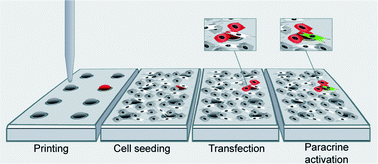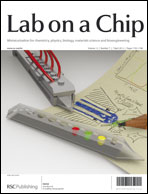A novel chip-based parallel transfection assay to evaluate paracrine cell interactions†
Abstract
The speed of gene function analyses in mammalian cells was significantly increased by the introduction of cell chip technology (reversely transfected cell microarray). However, the presently available technique is restricted to the analysis of autocrine effects of genes in the transfected cells. This limits the power of this method, as many genes are involved in heterotypic signaling both in physiologic and pathologic processes. At present, analyses of paracrine effects of transfected genes require trans-well or conditioned media approaches which are costly and time-consuming. Here, we present a novel method for the highly parallel analysis of paracrine gene functions on a chip. The basic idea was to adapt the cell chip technology to be performed with two different cell types which are differentially transfected: (1) an


 Please wait while we load your content...
Please wait while we load your content...